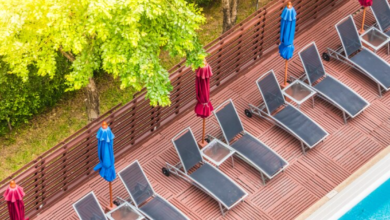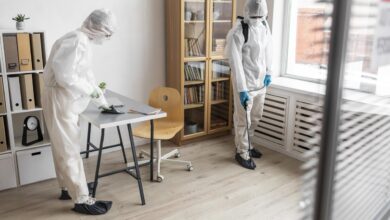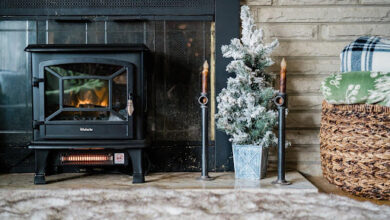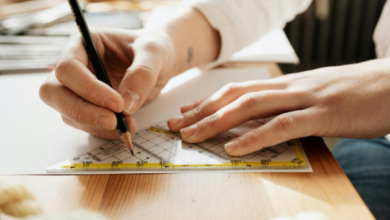The Future of Hospitality Interior Design and Villa Renovation in Dubai: Trends to Watch
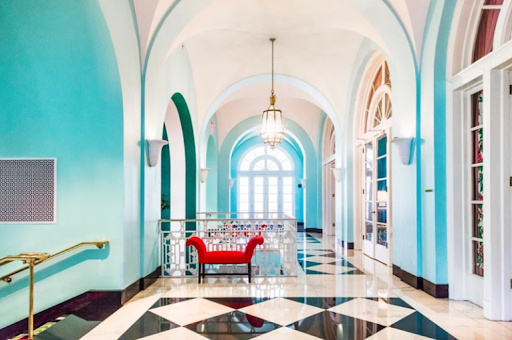
Dubai, a city synonymous with opulence, innovation, and cutting-edge architecture, continues to set trends in various fields, including hospitality interior design and villa renovation. As the emirate gears up for a future marked by sustainability, technology, and unparalleled luxury, the design landscape is evolving to reflect these priorities. This blog explores the future trends shaping hospitality interior designing Dubai and villa renovation in Dubai, offering insights into what industry professionals and homeowners can expect in the coming years.
1. Sustainability and Eco-Friendly Designs
As global awareness about environmental issues grows, sustainability has become a significant trend in interior design. In Dubai, this trend is taking center stage in both hospitality and residential projects. Here’s how:
Sustainable Materials:
The use of eco-friendly materials such as reclaimed wood, bamboo, and recycled metal is becoming more prevalent. These materials not only reduce the environmental impact but also add a unique aesthetic to interiors.
Low-VOC (Volatile Organic Compounds) paints and finishes are increasingly being used to improve indoor air quality.
Energy Efficiency:
Incorporating energy-efficient lighting, such as LED bulbs and smart lighting systems, is a priority. These technologies reduce energy consumption and create dynamic lighting environments.
Solar panels and green roofs are being integrated into villa renovations to harness renewable energy and reduce carbon footprints.
Water Conservation:
In a city that experiences extreme heat, water conservation is crucial. Innovative solutions like greywater recycling systems and water-efficient fixtures are becoming standard.
2. Smart Technology Integration
The integration of smart technology is revolutionizing the way spaces are designed and utilized. In Dubai’s hospitality and residential sectors, this trend is rapidly gaining traction.
Smart Homes and Villas:
Home automation systems that control lighting, climate, security, and entertainment are becoming common. These systems enhance convenience, security, and energy efficiency.
Voice-activated assistants and AI-driven home management systems are increasingly being incorporated into villa renovations.
Smart Hotels:
In the hospitality sector, smart room controls allow guests to personalize their stay experience through mobile apps or in-room tablets.
AI-powered concierge services and robotic room service are being introduced to enhance guest convenience and satisfaction.
3. Biophilic Design
Biophilic design, which focuses on connecting occupants with nature, is an emerging trend in Dubai’s interior design landscape. This approach is particularly appealing in an urban environment like Dubai, where natural elements can create a serene oasis.
Natural Elements:
The use of natural materials such as wood, stone, and plants is becoming more common in both hospitality and villa designs.
Living walls, indoor gardens, and water features are being incorporated to bring a touch of nature indoors.
Natural Light:
Maximizing natural light through large windows, skylights, and open spaces is a key component of biophilic design. This not only enhances aesthetic appeal but also improves mental well-being.
Color Palettes:
Earthy tones and natural color palettes are being favored to create a calming and inviting atmosphere.
4. Luxurious Minimalism
While Dubai is known for its luxury, there is a growing trend towards minimalism in design, characterized by clean lines, simplicity, and a focus on functionality without sacrificing elegance.
Clean Lines and Open Spaces:
Open floor plans and uncluttered spaces are becoming more popular in both villas and hospitality venues. This design approach creates a sense of spaciousness and calm.
Built-in storage solutions are used to maintain a clean and organized look.
High-Quality Materials:
The use of high-quality, luxurious materials such as marble, brass, and leather adds a touch of opulence to minimalist designs.
Attention to detail in craftsmanship ensures that every element, though simple, exudes sophistication.
5. Cultural Sensitivity and Local Influence
Incorporating local culture and traditions into design is gaining importance as Dubai continues to attract a global audience. This trend is about celebrating the emirate’s rich heritage while embracing modernity.
Arabesque Patterns:
Traditional Arabesque patterns and motifs are being integrated into modern designs, creating a unique fusion of old and new.
These patterns are often seen in tiles, textiles, and decorative elements.
Local Art and Artisans:
Showcasing works by local artists and artisans is becoming more common, adding authenticity and cultural depth to interior spaces.
Custom-made furniture and decor items that reflect local craftsmanship are highly valued.
6. Personalization and Customization
In both hospitality and residential design, there is a growing demand for personalized and customized spaces that reflect individual tastes and preferences.
Bespoke Design Solutions:
Tailored design solutions that cater to the unique needs and preferences of homeowners and guests are becoming the norm. This includes custom furniture, personalized decor, and unique layout configurations.
In villas, customization can extend to creating dedicated spaces for hobbies, such as home gyms, art studios, or wine cellars.
Experiential Design:
In the hospitality sector, creating unique and memorable experiences through design is a key focus. This can include themed rooms, immersive environments, and interactive installations.
Incorporating sensory elements such as scent, sound, and texture can enhance the overall experience for guests.
7. Wellness and Well-Being
The emphasis on health and well-being is influencing interior design in significant ways, especially in the wake of the global pandemic.
Wellness-Focused Spaces:
Home gyms, meditation rooms, and spa-like bathrooms are being integrated into villa designs to promote health and relaxation.
Hotels are incorporating wellness suites equipped with fitness equipment, air purification systems, and circadian lighting.
Healthy Materials:
The use of non-toxic, hypoallergenic materials is on the rise to create healthier living environments.
Air and water purification systems are being integrated into both hospitality and residential spaces to enhance overall well-being.
8. Outdoor Living and Connectivity
With Dubai’s favorable climate, especially during the cooler months, outdoor living spaces are becoming an extension of the interior.
Seamless Indoor-Outdoor Transition:
Designs that blur the boundaries between indoor and outdoor spaces are highly sought after. This includes large sliding doors, outdoor kitchens, and living areas.
Landscaping that complements the architectural style of the villa or hotel enhances the overall aesthetic appeal.
Rooftop Terraces and Balconies:
Utilizing rooftop spaces and balconies for outdoor lounges, gardens, and entertainment areas is a growing trend.
Incorporating shading solutions, such as pergolas and retractable awnings, ensures comfort during hotter months.
9. Adaptability and Flexibility
The need for adaptable and flexible spaces has become more apparent, especially with the shift towards remote work and multi-functional living environments.
Multi-Functional Spaces:
Designing spaces that can serve multiple purposes, such as home offices that double as guest rooms or dining areas that can be transformed into meeting spaces, is becoming increasingly important.
Movable partitions and modular furniture allow for easy reconfiguration of spaces to meet changing needs.
Future-Proofing:
Designing with future adaptability in mind ensures that spaces can evolve with the occupants’ needs. This includes flexible floor plans and infrastructure that can accommodate technological advancements.
10. Art and Aesthetic Integration
Art is playing a pivotal role in shaping the identity of spaces, with an increased focus on integrating artistic elements into interior design.
Curated Art Collections:
Hotels and luxury villas are curating art collections that reflect their identity and enhance the visual appeal of the spaces. This includes paintings, sculptures, and digital art installations.
Collaborations with local artists provide a platform for showcasing contemporary art while supporting the local art scene.
Interactive and Digital Art:
The use of interactive and digital art installations creates dynamic and engaging environments. These installations can respond to movement, sound, or other stimuli, offering a unique experience.
Projection mapping and augmented reality are being used to create immersive art experiences in hospitality settings.
Conclusion
The future of hospitality interior design and villa renovation in Dubai is marked by a blend of tradition and innovation, sustainability, and luxury. As the city continues to evolve, these trends will shape the design landscape, ensuring that Dubai remains at the forefront of architectural and interior design excellence.
By embracing sustainability, integrating smart technology, and prioritizing wellness and personalization, designers and homeowners can create spaces that are not only visually stunning but also functional, adaptable, and in harmony with the environment. Whether you are renovating a villa or designing a new hotel, staying ahead of these trends will ensure that your project is both contemporary and timeless, meeting the needs and expectations of a discerning global audience.
